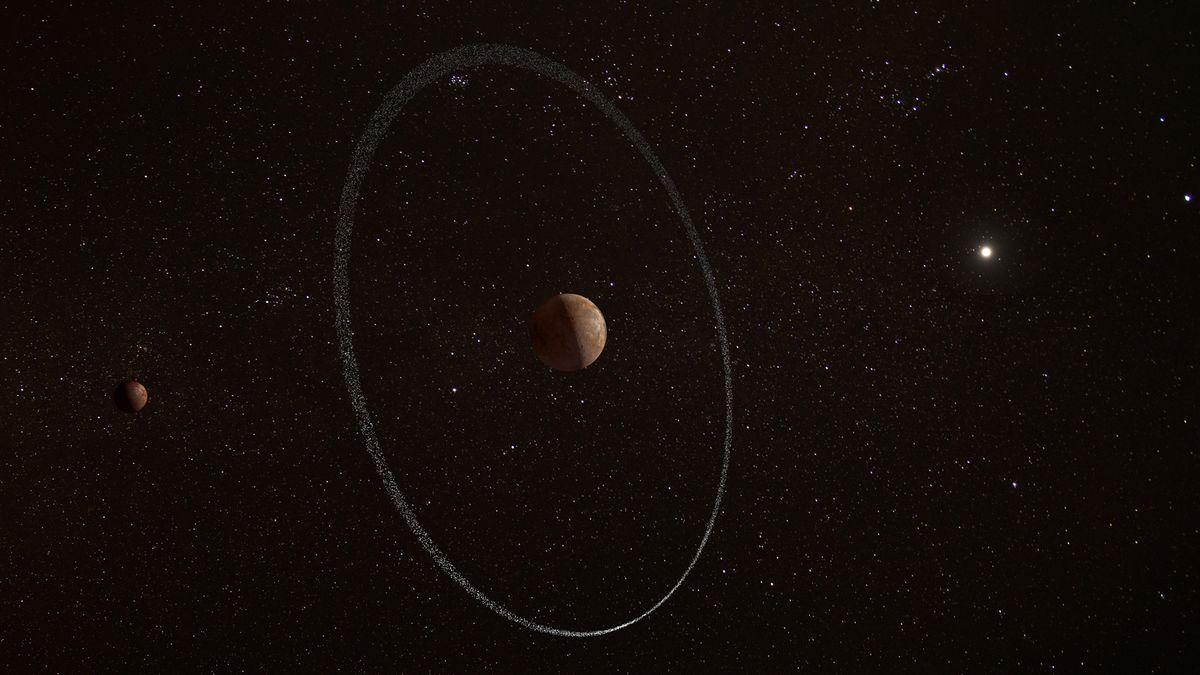
A #mini-planet orbiting in the frigid #outer reaches of the #solarsystem has a #Saturn-like #ring of #dust and #debris that #defies the rules of #physics, a new study has #revealed.
The planet in question is called #Quaoar and it's the #seventh largest of the known #dwarf #planets of which #Pluto is the #king. #Discovered in #2002 and about 697 miles wide (1,121 kilometers), Quaoar is one of the so-called #trans-Neptunian objects, small planets orbiting #beyond the solar system's outermost planet #Neptune.
Residing in the #KuiperBelt, the doughnut-shaped ring of rocky and icy debris in the outer solar system, Quaoar is a proud owner of its own #moon, the 100-mile-wide (160 km) #Weywot. And a recent observation campaign revealed that it also has a ring of material in its orbit.
That by itself wouldn't be so special. The gas giant Saturn is known to possess a whole series of rings. #Jupiter, Neptune and #Uranus also have some. One other trans-Neptunian object — #Haumea — has been found to have a ring, and the space rock #Chariklo that orbits between #Saturn and #Uranus also has one. So what exactly sets Quaoar's ring apart?
Related: Dwarf planets: science & facts about the solar system’s smaller worlds
Quaoar's ring is at a very unusual #distance from its parent body. In fact, before astronomers discovered Quaoar's ring in observations from several telescopes conducted between 2018 and 2021, they had thought that it was impossible for a ring to exist at such a distance. With a radius of about 2,420 miles (3,885 km) from Quaoar's center, the ring is too far away from the dwarf planet that its gravity should no longer be able to keep the material dispersed. Instead, it should coalesce under its own gravity and form another moon, just like Weywot. By not having done that, the ring has breached what astronomers call the Roche limit, the first known ring around a #celestial body to have done so.
"What is so intriguing about this discovery around Quaoar is that the ring of material is much farther out than the Roche limit," Giovanni Bruno, an astronomer at Italy's National Institute for Astrophysics (INAF) and one of the authors of the paper, said in a European #Space Agency (ESA) statement. "As a result of our observations, the classical notion that dense rings survive only inside the Roche limit of a planetary body must be thoroughly revised."
The ring was discovered during a series of occultations, essentially eclipses, when Quaoar passed between Earth and several more distant but much brighter stars. When an occultation occurs, the light of the background star temporarily dims. The effect is only visible to very sensitive telescopes and is frequently used to detect exoplanets orbiting stars in our Milky Way galaxy, which is why ESA's exoplanet hunter Cheops was among the telescopes watching these Quaoar occultations.
When astronomers analyzed the data, they realized that apart from the main dip in the background stars' brightness, they could detect two smaller drops. Since drops occurred before and after the main occultation, respectively, the researchers thought that Quaoar must be surrounded with a ring.
Several Earth-based telescopes also observed the occultations with similar results, but Cheops' data were particularly valuable as they proved that the odd dimmings were not caused by the effects of Earth's atmosphere.
https://www.space.com/mysterious-ring-around-dwarf-planet-puzzles-astronomers